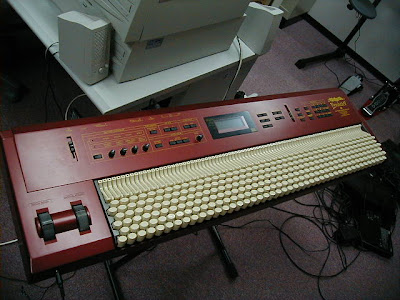
Via Mike Peake on AH:
"From 1997 through 1999, Dennis Graham advertised a new modular synthesizer of his own design. I was in contact with him, and received literature on the system. I believe that I contacted him again in the early 2000s; there may be a post from me on AH confirming this, when the name EVOS comes up every now and again.
I tried phoning and emailing him today; his phone number is disconnected and I have neither received an email bounce nor an answer (although only an hour or so has gone by- the foibles of the information age! If it isn't instant, it may not exist!). I didn't want him inundated with the curious, but if he answers, I'll post about what he's up to.
Pardon the quality of the scans; the machine I used didn't press down on the papers, so the folds cause curving of the images in places! They are lower quality due to there being 20 pages; perhaps I can send the lit to Joe at the Audio Playground for true archive-level scanning."
On flickr
And via John Loffink of The Microtonal Synthesis Web Site and The Wavemakers Synthesizer Web Site
"I don't know if Dennis ever made prototypes, but circa 2002 he did confirm that he never shipped any systems."
EVOS_01.jpg
EVOS_02.jpg
EVOS_03.jpg
EVOS_04.jpg
EVOS_05.jpg
EVOS_06.jpg
EVOS_07.jpg
EVOS_08.jpg
EVOS_09.jpg
EVOS_10.jpg
EVOS_11.jpg
EVOS_12.jpg
EVOS_13.jpg
EVOS_14.jpg
EVOS_15.jpg
EVOS_16.jpg
EVOS_17.jpg
EVOS_18.jpg
EVOS_19.jpg















































